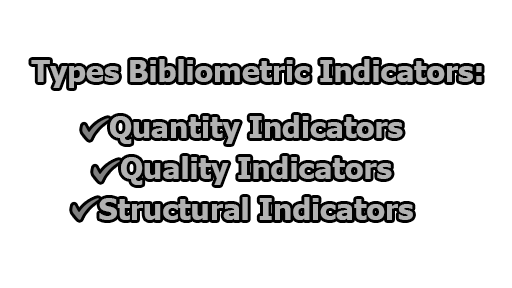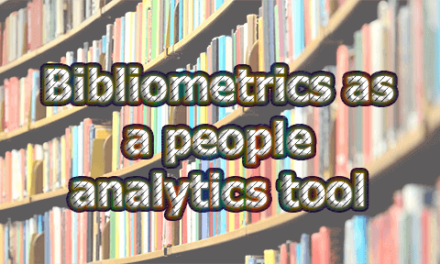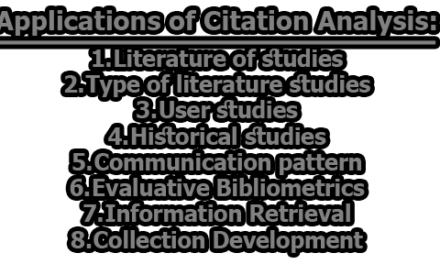Types Bibliometric Indicators: The bibliometric indicators are arbitrary and artificially provided. They have little connection with any theoretical background or understanding of the underlying process. Not all bibliometric indicators can be applied universally. They are contextual and sometimes highly specific. They are a set of bibliometric parameters. They are the results of the need for objective and easily manipulable measures of scientific and technological activities and output. But there are now bibliometric indicators for the social sciences and the humanities also.
Bibliometric indicators can give signals about what is going on in the research system, but results have to be interpreted to the complexity of the studied environment. Indicators compare the quantity, quality, and visibility of research implemented by various individuals or institutions.
There are three types of bibliometric indicators: Quantity Indicators, which measure the productivity of a particular researcher; Quality Indicators, which measure the quality (or “performance”) of a researcher’s output; and Structural Indicators, which measure connections between publications, authors, and areas of research. Based on these three indicators we can find some of the basic bibliometric indicators which are being;
- Sources: The collection of necessary data (publications or patents) is the basis for the construction of bibliometric indicators. The data could be obtained by making one’s own database (by using CD-ROM, etc.) or by a (commercial) database such as chemical abstracts. Science Citation Index, Medline, Der-went for patents, etc.
- Publications: Publication counts give a rough measure of the quantity of work produced by a research team or facility.
- Citations: Authors cite each other’s papers for many reasons, but analysts generally assume that rates of citation provide some measure of the quality, relevance, or interest, the impact of the cited paper. Thus, citation counts are an indicator of the influential research has had on the larger scientific community.
- Mapping (clustering): Bibliometric maps provide an instrument that can be used optimally in an electronic environment. Moreover, there is a large amount of detailed information ‘behind the maps’. Hence it is of crucial importance that this underlying information, particularly about research performance, can be retrieved in an efficient way, to provide the user with a possibility of exploring the fields and of judging the usefulness of maps against the user’s own expertise. These clusters can often be identified as ‘research specialties’. Mapping is used to visualize the structure of research fields or specialties (sub-fields) of science, and linkages of countries in the international arena.
- Co-citation analysis: Co-citation analysis provides a forward-looking assessment on document similarity in contrast to bibliographic coupling, which is retrospective. The citations a paper receives in the future depend on the evolution of an academic field, thus co-citation frequencies can still change.
- Co-word analysis: Co-word analysis monitors the number of times keywords are mentioned together in publication or patents in a particular field of science or technology. A map of these paring co-words describes the structure of a research field.
- Interviews: Interviews monitor the numbers of times keywords are mentioned by Interviewed scientists during an interview on a specific subject. A map of these keywords describes the structure and sub-structure of a research field.
Finally, we can say that bibliometric indicators are especially significant for researchers and organizations, as these measurements are often used in funding decisions, appointments, and promotions of researchers. As more scientific discoveries occur and published research results are read and then quoted by other researchers, bibliometric indicators are becoming increasingly essential.
References:
- Durieux, V., & Gevenois, P. A. (2010). Bibliometric Indicators: Quality Measurements of Scientific Publication. Radiology, 255(2), 342–351.
- Sen, S. K., (1999). For What Purpose are the Bibliometric Indicators and How Should They Work. Laboratory Indicative on Science & Technology.

Former Student at Rajshahi University










